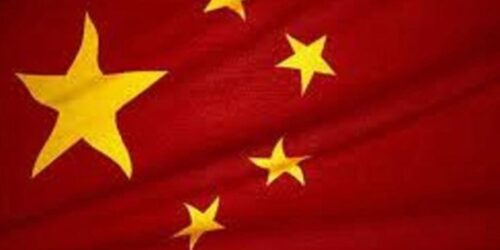The key driver of the rising inflation causing economic mayhem across the developed world remains historically elevated oil and gas prices that have been in play since the prospect of Russia’s invasion of Ukraine first came into view, which was in September last year, when the oil price was around US$65 per barrel (pb) of Brent. This rise, when combined with the huge rise in global liquidity caused by the various long-running quantitative easing programs that followed the Great Financial Crisis, have led Western government to embark on a series of dramatic increases in interest rates aimed at capping inflation but which, in themselves, may cause long-lasting economic recessions. One major factor that may serve to mitigate against this, by acting as a drag on oil and gas prices, is the economic outlook of China, which surpassed the U.S. as the largest annual gross crude oil importer in the world in 2017. Part of the problem for China’s economy has been the exceptionally negative effects of its ‘zero-Covid’ policy. This policy, personally championed by President Xi Jinping, is based on ultra-tight lockdowns that are introduced across entire cities immediately that a relatively miniscule number of Covid-19 cases are identified. December 2021 had seen a refinement of the zero-Covid strategy to one incorporating the idea of ‘dynamic clearing’, which provided local governments more flexibility in imposing restrictions, allowing daily increases in symptomatic cases to be capped at around 200 on a national basis. It was thought that this number might be increased, given that in the new outbreaks in March this year alone, 184,000 individuals with possible Covid symptoms had been put under medical observation in isolation in the first two weeks of those outbreaks.
Optimism arose from comments made by several Chinese agencies about a possible softening up of the zero-Covid rules, and then came the publication in the middle of April of the Chinese Center for Disease Control and Prevention (CCDC) guide that outlined measures for quarantining at home. These would have alleviated the economy-paralysing effects of people having to quarantine at centralised state-run facilities, even if suffering from very mild symptoms or none, having tested positive for Covid-19. These hopes were dashed, though, as, when asked for further clarification of these home-quarantining procedures, the CCDC simply reiterated the previous rules. President Xi then personally reiterated that: “We must adhere to scientific precision, to dynamic zero-Covid…Persistence is victory.” As it now stands, China still does not have an effective vaccine against Covid-19, nor does it have an effective post-infection anti-viral, and it still refuses to buy in such supplies from non-domestic suppliers, despite repeated offers from all major producing countries to make such supplies available to it.
The clean sweep of support that President Xi secured at the recent 20th Party Congress to be re-elected as General Secretary of the Chinese Communist Party for a third term almost certainly means that this zero-Covid policy will not change at all. “China’s commitment to its dynamic clearing COVID strategy remains the strongest headwind to growth, and official statements before and during the Party Congress trumpeted the policy as the most appropriate for the country,” Eugenia Fabon Victorino, head of Asia Strategy for SEB, told OilPrice.com last week. “In 2020, China’s economy managed a swift recovery from the first wave of infections as mobility restrictions succeeded in capping transmissions to a limited number of regions, but the increasingly contagious viral strains have led to a substantial rise in regions reporting daily new cases of COVID,” she added. Indeed, as of just over a week ago, 26 out of 31 regions had seen severe outbreaks that threaten to spear to China’s key commercial cities.
Another part of the problem for China is the increasingly perilous position of the country’s property sector and, by extension, of its huge hidden debt burden. The collapse of major Chinese real estate developer, Evergrande, earlier this year, under the weight of over US$300 billion in liabilities, heightened concerns that contagion might spread beyond the property sector, crushing demand in China’s offshore bond markets. As highlighted by OilPrice.com at the time, and well before that by then-Fitch analyst, Charlene Chu, China had long been hiding a mountain of debt, used in part to finance its extraordinary economic growth for the 20 or so years since the 1990s. Combined with the corollary bubbles in China’s housing and other asset markets that have been inflating over the past few years, as analysed in depth in my new book on the global oil markets, the situation in China right now is very similar to the one in the West in 2007/08 to which nobody paid attention until there started to be bankruptcies, which then snowballed into the full-blown Great Financial Crisis. “Before the Congress, Beijing announced yet another raft of policy adjustments to boost housing demand,” said SEB’s Victorino. “However, cash-strapped developers continue to default on offshore bond maturities- in fact, the issuer-based offshore default rate among real estate names continues to climb, to 20.4 percent as of September, from 5.2 percent at the end of 2021,” she added.
In terms of specific negative ramifications for China’s economic growth, the key Purchasing Managers’ Index (PMI) for factory activity fell unexpectedly in October, to 49.2, a decrease of 0.9 from the previous month, and indicative of an outright contraction. In line with this, China’s crude oil imports for the first three quarters of the year fell 4.3 percent year-on-year to mark the first annual decline for the period since at least 2014. As at the end of the first half of this year, then, the economic outlook for China was already deteriorating more than had previously been expected, with SEB’s Victorino and TS Lombard’s head of China and Asia research, Rory Green, having already downgraded their GDP growth estimates for China earlier in the year, to just 3.5 percent in SEB’s case, and only 2.5 percent in TS Lombard’s.





